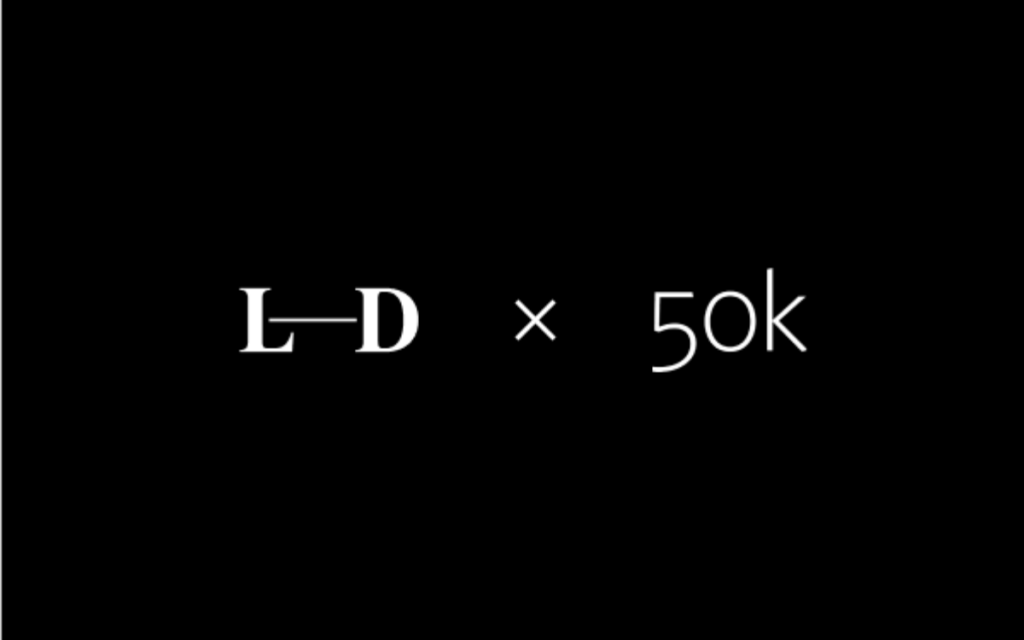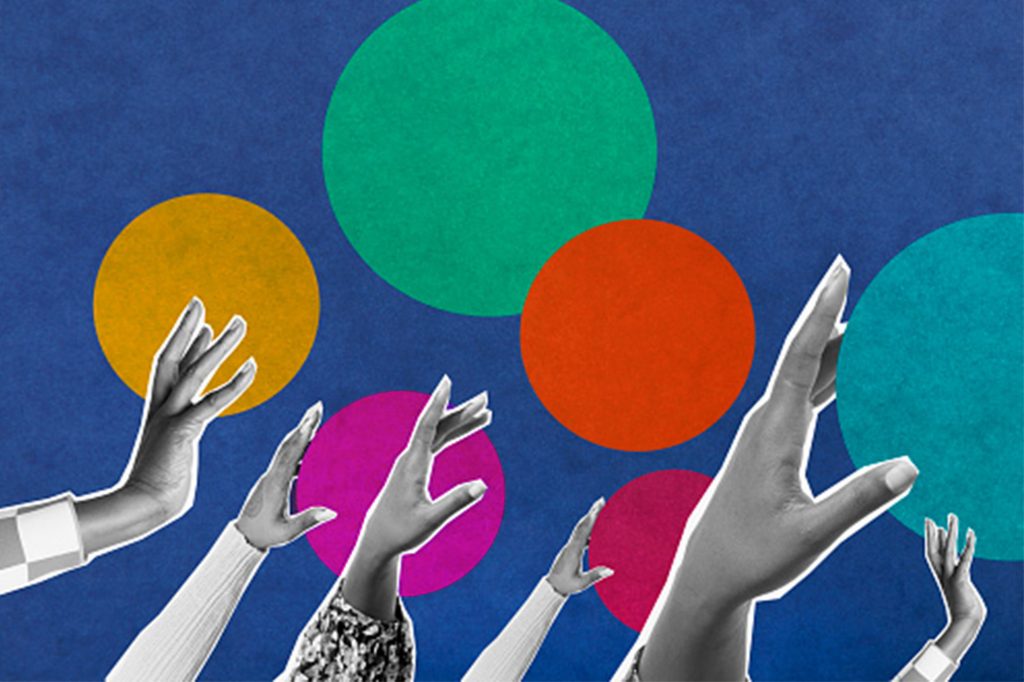Racial Equity Narratives That Spurred Organizational Change
Janeen Williamson is a diversity, equity, and inclusion practitioner. She formerly led business partnerships at Long Dash and NPR.
Personal narratives from employees are often the most powerful ways to share your organization’s message and purpose. Yet while audiences often just see the end result—a compelling first-person narrative—it requires inward reflection and leadership support before these stories can take root in a genuine way. Members of Lumina Foundation staff have shared their “equity narratives”—personal journeys around race in America. This is part of a collective effort to explore the country’s long history of structural racism and how these barriers affect the people they serve.
As a Black woman watching Susan Johnson’s video, I felt a deep connection to her equity narrative. It sounded very familiar, in many ways identical, to my own experience. Susan has been with Lumina Foundation for over 12 years. Prior to her current role, she served as a strategy officer, director of equity and inclusion, and as director of impact and research. The equity narrative project is just one result of an eight-year DEI journey that started when Susan raised her hand and asked the foundation leadership, “What do we mean when we say equity?”
During our conversation, Susan and I explore what it means to be a Black woman leading equity work, how an organization can get started, and what other nonprofits should consider during their organizational DEI journey.
Lumina Foundation is a private foundation in Indianapolis that is committed to making opportunities for learning beyond high school available to all.
This is Episode 2 of an ongoing series focused on diversity, equity, and inclusion. For full transparency, Lumina Foundation is a client of Long Dash.
This interview has been shortened and edited for clarity. The transcript is available below.
Janeen Williamson: How did the conversation on racial equity come about at Lumina Foundation?
Susan D. Johnson: 2013 was the beginning of our concerted equity efforts. The launch of our 2013-2016 strategic plan was the first time we had used the word “equity.” Given my background in student affairs and institutional research, and my efforts to improve success for students of color, I wanted to be clear about what Lumina meant by “equity.” So I raised my hand. I asked, “what exactly do we mean by this?”
When you raise your hand, you suddenly become responsible. And I was willing to do that. I actually proposed setting forth a position that would allow me to focus on our efforts around equity. One of the first steps was to create a statement after much research, utilizing consultants, and doing environmental scans. It was a big step and a hard process. We had initial consultants come in and share: “We see that you utilize several different kinds of terms. You don’t really say race. You say students of color, you say low income, you say all these other things that people may say other than the word race.” And so that was step one: Say the word “race.” Step two: Be clear about what you mean by the words.
I can vividly recall the staff meeting where we announced that we were going to focus on racial equity. We played what I would call “oppression Olympics” about whose struggle was worse or more important. Why not focus on gender? Why not physical abilities? Why not this? Why not that? What we came to realize was that much of what we had done already focused on race—we just hadn’t called it that. The data we were regularly collecting for a report called “Stronger Nation” was broken down by race and ethnicity. So this was just a step in that direction to be more explicit, as our consultants had asked us to do.
Janeen Williamson: To say “I have this question” and for the organization to address it and put resources behind it meant you had buy-in from supervisors and the organization as a whole. How did that impact the work and your ability to move it forward?
Susan D. Johnson: It did take our leadership saying, “this is what we will do.” It was explicit. There were no if’s, and’s, but’s, or so’s. Our leadership said: “We are going to focus on racial equity. We will take the steps we need to make sure that is paramount in our work day-to-day.” I won’t say that all the resources were there at the beginning. It was just me in the beginning. But since then, we have had greater executive-level buy-in. We have an equity workgroup that consists of people across the institution giving up their time, thoughts, and considerations to move this work forward as an organization.
What started off as a singular program officer raising her hand has evolved into so much more and so much more involvement from the staff. Again, it started with our leadership saying, “this is important and if you want to come along on this journey with us, great, you can be a part of Lumina.” As we bring in new staff, as we bring in new partners, we make it very clear that racial equity matters to us. And should you want to partner or work for us, it should matter to you.
Janeen Williamson: You have an amazing video series live on your website on personal racial equity narratives. I remember watching your video and feeling so connected to your experience. I remember the first time someone said a derogatory term to me when I was in elementary school growing up in Massachusetts and one of two Black girls in my class. Has your experience of code-switching impacted your work at Lumina and your career in general?
Susan D. Johnson: It’s never been uncommon for me to be one of the few, if not the only, people of color in the room. It’s more likely the norm than not. I’ve always had to assess who else is in the room. I want to find someone else that looks like me. I’m going to assess whether or not I feel it’s safe or appropriate for me to use slang or colloquial language, or how much or little I want to share about my personal life. That’s just a constant and has been for a very long period of my life.
Additionally, I am very observant. I’ve always felt that people’s actions speak far louder than their words, so I’m always going to be in the back of the room making assessments about how you act and speak to get a feel for the room. I am rarely the first person to speak. I would much rather just see where this conversation is going and then say, “Okay, here’s how I can interject. Here’s what I can add.”
Janeen Williamson: I relate to that so much. And for me, it’s been about safety. Do I feel like when I do speak up that I’m heard? Do I feel like I’ll be dismissed? Safety has such a big impact in how you show up, especially in the workplace. I’m curious to know what had to happen for you and your colleagues to feel safe enough to tell such vulnerable stories. What did the organization do to create that safe space?
Susan D. Johnson: Initially, I just didn’t think about it. I simply saw it as an opportunity to say, “this is what led me to this point in my life and the work that I am doing.” In recalling my path, everything that I stated was a part of me. I didn’t see it as something that I needed to hide. I didn’t realize that someone might not feel comfortable until we invited other staff to participate. They asked me, “how are you able to be so vulnerable?”
I think our communications department giving us coaches and resources helps bring people’s stories to life. They found the pieces and parts that they thought would resonate and pieced it together.
For staff members that came after me, we invited them to share their stories, recognizing that they may not be as comfortable as I was. We allowed them to say what they wanted to say and didn’t press people. We recognized that not all staff were as far along as we were in terms of that ability to be as vulnerable. We focused on pulling out pieces and parts they were comfortable with. It didn’t have to be videotaped. It could be a blog or a quote.
Sign up for OnBrand
Our weekly digest featuring ideas on the future of brand.
Janeen Williamson: There’s been a lot of conversation, especially over the past year, about putting undue burden on people of color to do diversity, equity, and inclusion work. What do you think about that as a woman of color who has made it a point to make this a part of what it is that you do every day at Lumina Foundation?
Susan D. Johnson: I worked in higher education before I came to Lumina. As a person of color focused on higher education, I knew people were going to tap your shoulder for a number of things. That could be advising students or serving on God knows how many committees. People refer to it as a tax of sorts. You’re going to pay this tax, in being a person of color in the room.
For me, I really knew that it wasn’t for the faint of heart. You were going to get tired. You were going to get upset some days. You were going to try to help others understand that I’m not the only one in this room that can do this. This is not just for people that look like me that focus on this issue. This is an institutional issue, this is an organizational issue—and therefore, anyone within the organization should be able to provide the resources and support various people need in order to carry this work forward.
I will say, I know how to balance my life. I know how to say “no.” Not everyone has that ability. But trust me, if you talk to my colleagues they will tell you two things: I value my time off, and when I’m off, I’m off. And I do that so that I can maintain the balance I need, so that I can do and pay it forward in the ways in which I want to do it.
Janeen Williamson: People are starting to really turn that mirror on themselves and look at the values they are sharing out in the world and seeing if they’re actually doing it within. When you take a look at everything that you’ve done over the past several years in this work, what are some key lessons that you would share with someone that might just be getting started at this within their organization?
Susan D. Johnson: We started with just an individual asking a question. And it may be the same for many nonprofits and foundations out there considering this. But I can’t do this on my own; it’s always going to take leadership buy-in. The piece I encounter a lot from colleagues and people at other foundations is sometimes they don’t have that buy-in and so their paths may be longer.
Even with buy-in, it’s a process; we’ve been doing this for eight years. People see our videos and say, “oh, this is a lovely equity video.” We didn’t start here. I encourage people to have patience to focus on one thing at a time. Make clear what the priorities are. Be clear in what you mean. Again, we spent a lot of time being very clear about what we meant by racial equity, and even that has changed and been refined over the years.
Now we have regular training, consultants, equity workgroups, and a book club. There’s going to be starts and stops; there’s going to be reconfiguration. Leadership is key. Having a workgroup that doesn’t just consist of people of color is also important. We have representation from across the organization. People at all levels serve on that work group. No matter how you define equity within your organization, it is important that it doesn’t just fall on certain individuals within your organization. There should be a wide swath of people involved in the work.
Janeen Williamson: I’ve heard a lot of people that are just afraid to start. “What if I say the wrong thing?” You can’t be afraid to start.
Susan D. Johnson: You can’t stay where you’re at.
Janeen Williamson: Exactly. Since you took the time to do this internal work, you’ve been working at it now for eight years. How do you feel it has enriched your organization’s culture, so that you can do even more and have greater impact in the external world?
Susan D. Johnson: By taking that internal look we were able to be more honest about what matters to us as a foundation. You’ll see phrases like, “we place equity first.” And that is carried throughout all we do within the organization: our hiring process, our grant making, the vendors we utilize, and our fund managers for our endowment—it is embedded throughout.
We have that question at every point along the way, in every step, in every facet of what we do. That’s not saying we get it right every time. We don’t. But we at least ask the question; we at least bring it up such that people know it matters to us. We are going to work through this with you. We’re not just going to expect external partners to suddenly just be all-knowing, because we’re not all-knowing. We, again, have stops and starts. We have lessons that we continue to learn.
This has given us the ability to say we’re going through the same thing that we’re asking you to go through. We are taking the time to learn just as we’re asking you to learn. It’s important that whatever resources we have and that we utilize, that perhaps we can share those resources with you or give you the ability to kind of come up in this journey if you’re not there already. All of these things are things that we’re considering that, again, eight years ago, was a glimmer. It was nowhere on the radar.
We know that there’s still a lot of work to be done. And if our stories can help in that work, we’re going to continue down that path.
Janeen Williamson: Thank you so much, Susan. It has been a pleasure speaking with you and just having an opportunity to hear about your experience and to learn. I also hope that a lot of people will be able to take a lot away from this conversation as well. Thank you so much for your time.
Susan D. Johnson: Thank you.





